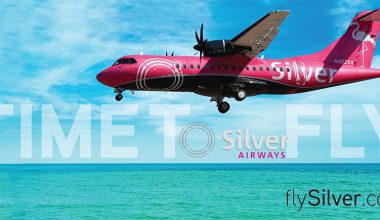When the Franco-British supersonic airliner Concorde entered service with Air France on January 21, 1976, it was the most impressive aircraft ever to grace the sky. It was a head turner and caught the world’s attention by performing the flight from New York to London in just three hours. It revolutionized air travel and took commercial aviation one step ahead by flying faster than the speed of sound. Although Concorde remains only in memories now, it has left a long legacy for future aircraft like Boom Overture, which is set to bring back supersonic flights. Boom Overture is a proposed supersonic airliner of US-based Boom Technology designed to become the new American Concorde by carrying passengers at twice the speed of today’s fastest commercial aircraft.

The supersonic aircraft is slated to operate its maiden flight in 2026 and carry its first passengers by 2029. Although the current engine issue is casting doubts over Boom Overture’s future, the success of this ultra-fast jet will bring a new era of supersonic travel, and the airline industry will once again reach its pinnacle. Let’s take a closer look into the supersonic pathway of Boom Overture.
Supersonic pathway of Boom Overture
Unlike common subsonic airliners, Boom Overture is a supersonic jet proposed to be the world’s fastest airliner with transonic overland flight speed close to Mach 1 and a long-range overwater flight speed of Mach 1.7. It is designed to carry 65 to 80 passengers with a 4,250nmi (7,870km) range.

The aircraft will incorporate a compound modified delta planform featuring a sharper trailing edge sweep angle with a reduced sweep outboard to provide improved lateral stability and additional lift at subsonic conditions without affecting its supersonic 1.7 Mach speed performance.
Under the refined configuration of Boom’s Overture passenger design, the aircraft will be powered by four wing-mounted engines, allowing it to take off at derated thrust settings, helping reduce noise. One of the issues plaguing the Concorde was a sonic boom, an explosive noise like a thunderclap caused by shock waves. For the Overture concept to take off, it must comply with stringent International Civil Aviation Organization (ICAO)’s FAA Stage 5 takeoff and landing noise limits.
Current engine woes of the Boom Overture
The Colorado-based company Boom Technology has already unveiled its significantly revised Overture design; here, however, is a catch. The airline has no jet engine maker, at least of now when the company scrambles to maintain track to begin the production of the Overture prototype in 2024. In early September, Rolls-Royce, the world’s second-largest maker of aircraft engines, backed out from Boom Supersonic Airliner Engine Race, saying supersonic aviation was not its priority.
In 2020, Rolls Royce and Boom Technology entered a contract for a supersonic Overture program intended to explore the pairing of Rolls-Royce propulsion system with Boom Overture and bring sustainable supersonic transport to passenger travel. Guided by a shared commitment to sustainability, Rolls-Royce and Boom agreed to work together to identify the propulsion system that would complement the Overture airframe.

However, two years later, in the first week of September 2022, Rolls-Royce confirmed that it wouldn’t pursue further work on Boom’s flagship supersonic passenger aircraft, Overture, as the commercial aviation supersonic market was not currently a priority for them. The engine maker previously worked on the Concorde’s Olympus 593 powerplants.
End of engine partnership with Rolls-Royce- what next?
Now that Rolls-Royce has quit the supersonic program, the main question is, who will be the next engine partner for Boom? General Electric Company, the American aircraft engine supplier, has already informed analysts about its decision not to make a supersonic engine for Boom. The company was the engine partner of now-defunct planemaker Aerion to power the supersonic jet Aerion AS2.

Other top-notch engine manufacturers, such as Safran Aircraft Engines and Pratt & Whitney, are hesitant to develop supersonic engines for Overture. P&W calls supersonic jets ‘tangential’ and focuses on its geared turbofan (GTF) commercial engines.
With some jet engine manufacturers distancing themselves from the Overture project, Boom has a lot to do to convince engine makers. The aerospace company Boom needs to sort out the engine partnership soon to meet its first-flight target of 2026. As a powerful engine is a key to achieving the cruise speed performance of Mach 1.7 over water, Boom has to secure a new engine OEM that can effectively deliver on the promises made.
Net zero carbon with Sustainable Air Fuel
Recognizing the need for supersonic passenger travel to remain compatible with a net-zero carbon future, Boom Technology signed a sustainable aviation fuel agreement with Air Co. a few days ago to purchase up to 5 million gallons of such fuel on an annual basis throughout the Overture flight test program.
The Mach 1.7, 4250nm range, supersonic Boom Overture, is anticipated to be the first large commercial aircraft to be net-zero carbon from the very first day, using 100% Sustainable Air Fuel (SAF) in line with its sustainability strategies for aviation. Air Co. is a company specializing in deriving carbon-negative products from Co2 using renewable electricity. By signing the agreement for SAF, Boom is making real strides toward a markedly different world of aviation, emphasizing sustainable supersonic travel.

The fuel-thirsty jet engine was one of Concorde’s key drawbacks, as the aircraft had a total fuel consumption rate of 5,638 Imperial gallons per hour. The high fuel consumption was one of the vital reasons for Concorde’s eventual shelving, as it pushed the airlines’ costs to the limit and crippled their finances.
Overture orders from airlines
The faster-than-sound Overture jet has already drawn order commitments from four identified airlines, including two US mega-carriers, United Airlines and American Airlines, Japan Airlines, and Virgin Atlantic.
Last year, the Chicago-based United Airlines placed firm orders for 15 Boom’s ‘Overture airliners’ intending to give its business and leisure travelers access to a stellar flight experience with new supersonic planes. United is the first American carrier to enter a purchase agreement with Boom Supersonic, which outlines the carrier’s commitment to buy 15 Overture aircraft once the jet meets its demanding safety, operating, and sustainability requirements. In addition to 15 firm orders, United has additional order options for 35 more supersonic aircraft.
American Airlines (AA) joined the supersonic operator line by agreeing to purchase up to 20 Overture aircraft on August 16, 2022. A little more than a month ago, the largest US carrier paid a non-refundable deposit on the initial 20 aircraft, with an option for an additional 40. American Airlines is poised to have the world’s largest supersonic fleet and the highest number of Overture orders. While it’s too early to discuss potential markets for AA’s supersonic jets, flights from Miami to London in less than five hours and Los Angeles to Honolulu in three hours are many possibilities.
The Fort Worth-based airline is optimistic about Overture’s ability to introduce an important new speed advantage to its fleet and to shape the future of travel both for the company and its customers. The purchase specifics are still subject to a finalized purchase agreement; American Airlines won’t take delivery of any Overtures until Boom satisfies industry-standard operating performance and safety requirements and its other customary conditions.
Japan Airlines placed a pre-order for 20 Overtures in 2017, whereas British carrier Virgin Atlantic reached the Boom deal for ten aircraft in 2016.
Proposed markets for Boom Overture
With a range of 4,250 nautical miles and 20% faster speed than a conventional jet over land, Boom overture could fly about 600 routes worldwide and serve far more cities than most imagine. According to Boom, the carrier can fly 65% of its viable routes nonstop, requiring a refueling stop for transpacific routes. The aerospace company also claims that the supersonic jet will operate flights in half the time of a conventional aircraft and need a refueling time of only 30 minutes.

If the concept of Overture takes flight, the company says that the flight duration between New York/Newark will be 3 hours and 30 minutes, 4 hours on the Newark-Frankfurt route, and under five hours on the London-Miami route.
Difference between Concorde and Overture
While the Concorde program resulted from heavy government funding (both British and France), the Boom Overture program will be purely commercial, with an estimated budget requirement of between $6 billion and $8 billion to bring the product to the market. Concorde had fuel-thirsty engines with a higher carbon footprint, while Boom promotes its aircraft’s green credentials and aims to achieve net zero carbon dioxide by 2025.
There’s also a seating capacity difference between Concorde and Overture. The average seating capacity of Concorde is 92 to 128 passengers, as opposed to Overture, designed for 65 to 88 passengers.
Bottom Line
Boom Overture seeks to pursue the supersonic pathway as Concorde, eliminating the errors that made the jet fall out of favor with airlines-high costs, high fuel consumption, more environmental issues, etc. Suppose the aircraft meets its expectation of carrying the first fare-paying passengers in 2029. In that case, it will be the top engineering success of modern times and lead the aviation market to a whole-new supersonic air journey.





